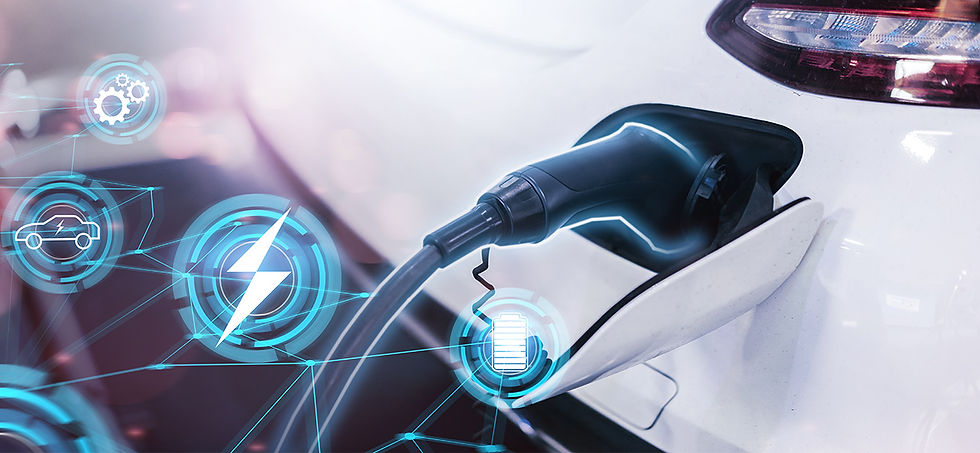Kitna Deti Hai - The EV Twist
- Nilesh Bajaj
- Apr 12, 2022
- 3 min read

In a country obsessed with fuel efficiency (mileage as we call it), the new age EV manufacturers have put surprisingly little effort to educate the consumer about calculation of energy efficiency and range per kwh of battery capacity.
First let me set a simplified analogy between ICE and Electric Vehicles
Petrol / Diesel Vehicle | <> | Electric Vehicle |
Internal Combustion Engine | <> | Electric Motor |
Fuel Tank | <> | (Traction) Battery Pack |
Petrol / Diesel | <> | Electricity |
When all the EV manufacturers are focusing on Total range per charge (in ideal conditions), one should ask whether this range is a result of better vehicle efficiency (similar to star rating in home appliances) or just a larger battery pack for which the consumer has to pay a huge upfront cost.
First we need to understand the method of measuring energy efficiency. We are used to saying that an ABC vehicle runs 20km per liter of petrol. What we are implying here is the vehicle with some given payload (passenger + cargo) can run 20 km by using the energy of that one (1) liter of petrol. Assuming the rate of petrol to be INR 120 / Ltr, you have a running cost of ~INR 6 / km.
Similarly for EV’s the consumer will pay for the amount of electrical energy used to charge the battery pack that is measured in kilo-watt-hour (kwhr). 1 kwh = 1 unit of electricity that may cost from ~INR 8-10/unit for a residential connection, but will cost ~INR 16-20 on a commercial charging network as per online data. Hence the running cost of a vehicle will vary depending on your charging location / supplier.
Let’s take a real world example of Tata Nexon:
Range of the vehicle (as per ARAI test cycle) = 312 km
Range of the vehicle (as per real world data) = 220 km
Battery pack capacity = 32 kwh
Hence the efficiency (Ideal) = 312 / 32 = 9.75 km / kwhr
Hence the efficiency (Real World) = 220 / 32 = 6.875 km / kwhr
This is the figure EV manufacturer should include in the marketing brochure
So, for electrical unit rate of INR 10 / kwhr, running cost of the vehicle ~INR 1 / km
This was a simplification of calculating vehicle efficiency. But as we all know vehicle mileage also depends on various factors such as weight, average speed, type & size of tyre etc. The biggest factor being weight of the vehicle as that generally matches the vehicle segment, eg. hatchback ~800kg, sedan ~1000-1200kg, Full size SUV ~1500-2000kg etc.
So a well engineered SUV might have a lower mileage but a batter efficiency as compared to a poorly designed hatchback if we normalize efficiency over vehicle weight. That means we want to compare the amount of energy each vehicle will spend in carrying the same amount of load.
Let’s continue with the example of Tata Nexon:
Curb vehicle weight = 1400kg = 1.4 Ton
Efficiency (Real World) = 6.875 km / kwhr
Hence normalized efficiency = 6.875 * 1.4 = 9.625 km / kwhr / Ton
Now this is a parameter that can be calculated and compared across the range of electric vehicles. Here are calculations for EVs available in India and some international models. For simplicity, I have assumed the real world range of vehicles to be 70% of claimed range.

*Data as per information from various sources on the Internet
A higher normalized efficiency will generally indicate a well designed product which has higher efficiency in complete power-train from electronics to mechanical components. And as the major idea behind electric vehicles is sustainability, we should focus on overall efficiency of the system and not just total range per charge.
Please share your feedback in the comments section :)
How does reliability differ from validity in research?
Reliability and validity are two essential concepts in research that ensure the accuracy and credibility of findings. Reliability refers to the consistency of a measurement—whether the results can be replicated under similar conditions. In contrast, validity measures how accurately a tool or method captures the concept it claims to assess. Many students often struggle to differentiate these terms in academic writing. That’s where BookMyEssay comes in, offering expert difference between reliability and validity assignment help to clarify complex concepts with ease. Their guidance ensures a deeper understanding and better grades, making academic challenges more manageable and less stressful for students.